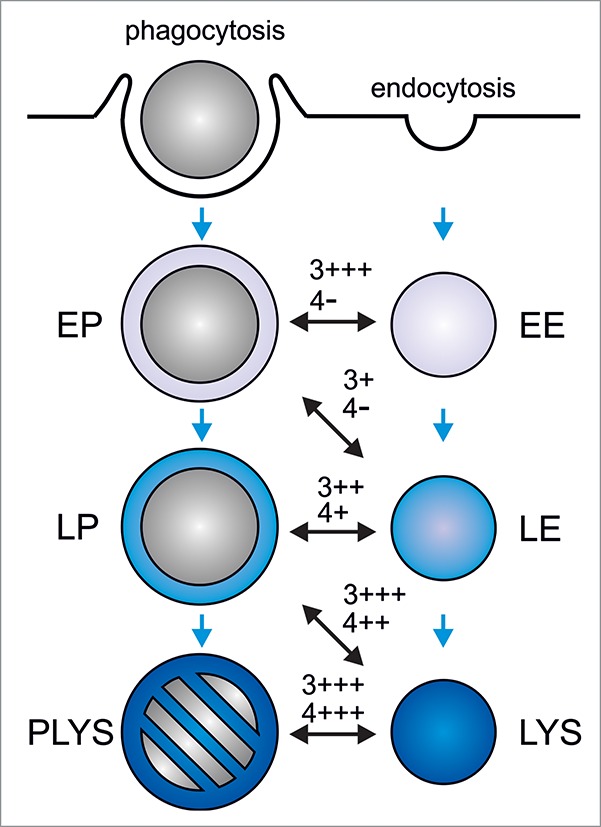Figure 1.

Regulation of phagolysosome formation by phosphatidylinositol 3-phosphate and phosphatidylinositol 4-phosphate. During phagocytosis, phagocytes ingest large particles (e.g. microorganisms) into plasma membrane-derived phagosomes. These mature into microbicidal and degradative phagolysosomes (‘PLYS’), leading to killing and destruction of the enclosed cargo. Solutes and small particles (< 400 nm in diameter) are taken up by endocytosis. The resulting endosomes deliver their cargo to lysosomes (‘LYS’) where it is degraded. Three different compartments have been defined for both, the phagocytic and the endocytic pathway: Early phagosomes/endosomes (‘EP’/‘EE’), late phagosomes/endosomes (‘LP’/‘LE’), and phagolysosomes/lysosomes. Note that the definition of 3 different phagocytic or endocytic compartments substantially simplifies the diversity of organelles along the phagocytic and endocytic pathway. As phagosomes mature, they sequentially fuse with and acquire the characteristics of early endosomes, late endosomes, and lysosomes. Blue arrows mark the progression of phagosome maturation. The different phagosome-endo(lyso)some fusion events are indicated by black, double-sided arrows. Dependence of the reconstituted phagosome-endo(lyso)some fusion on PI(3)P (‘3’) or PI(4)P (‘4’), as judged by its sensitivity to PI(3)P- or PI(4)P-sequestering protein domains, is indicated: ‘-’, no inhibition; ‘+’, >25% inhibition; ‘++’, >50% inhibition; ‘+++’, >75% inhibition. In summary, PI(3)P regulates phagosome maturation at early and late stages, whereas PI(4)P is selectively required late in the pathway.
